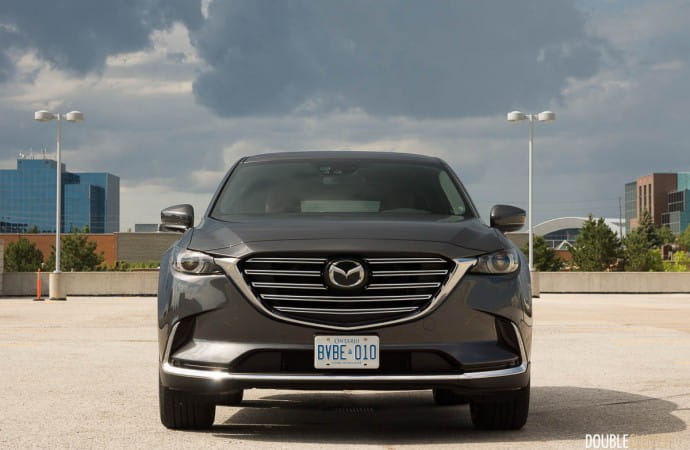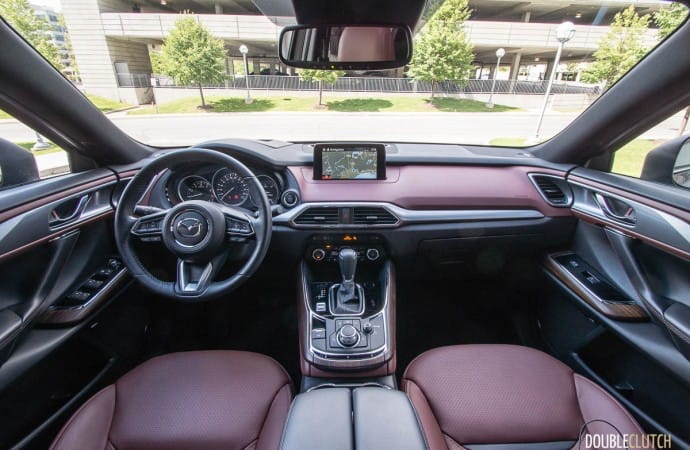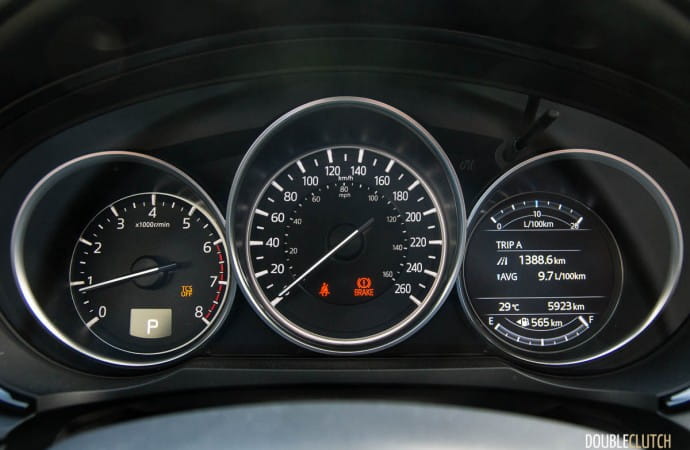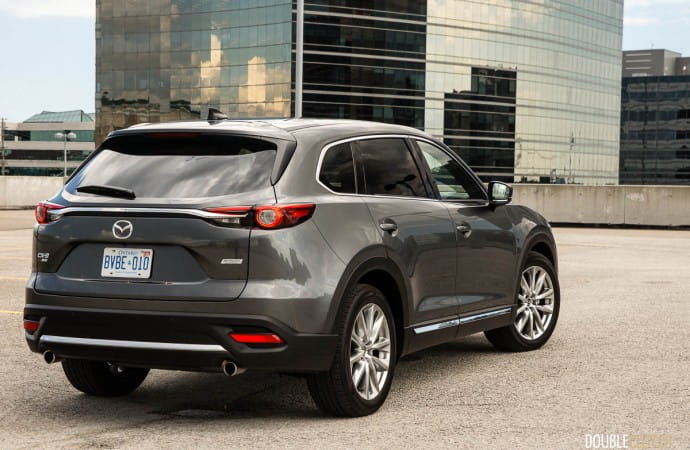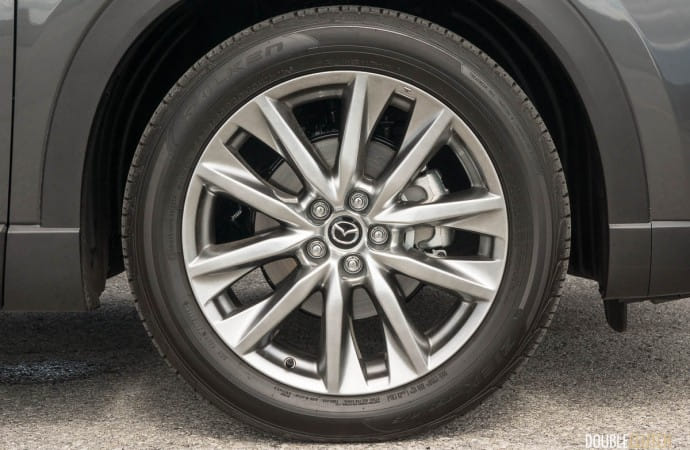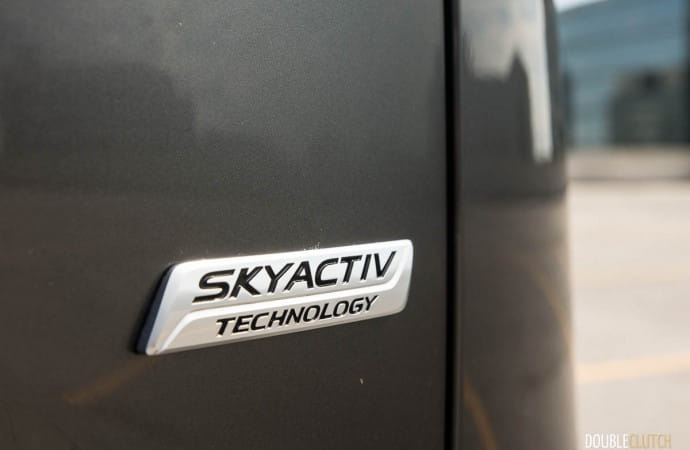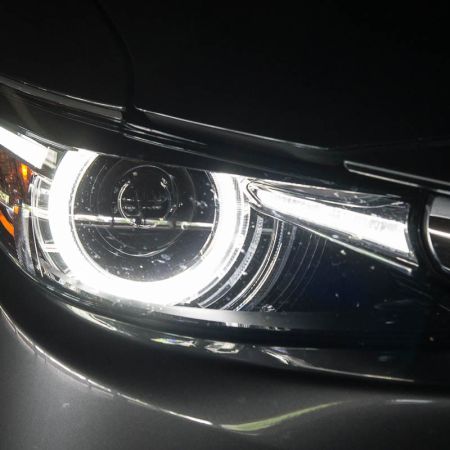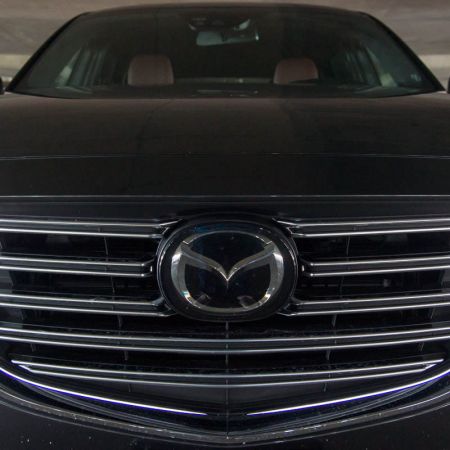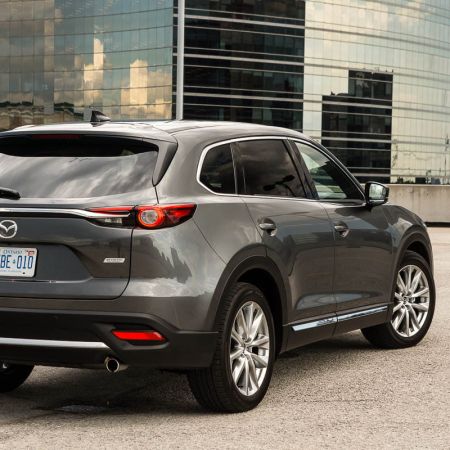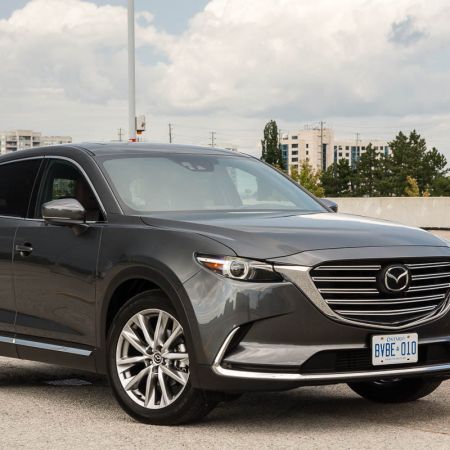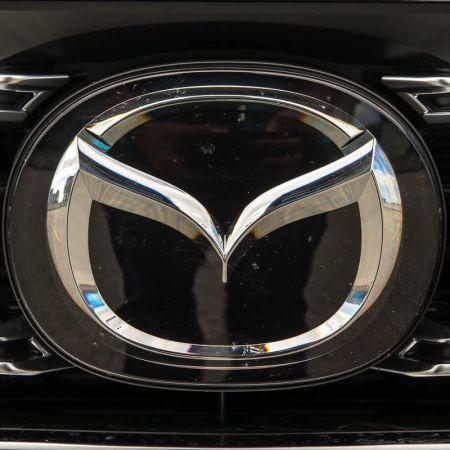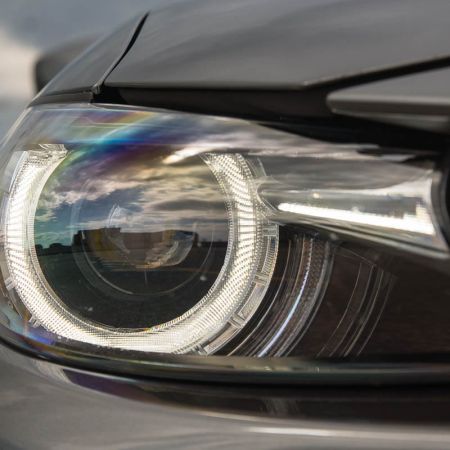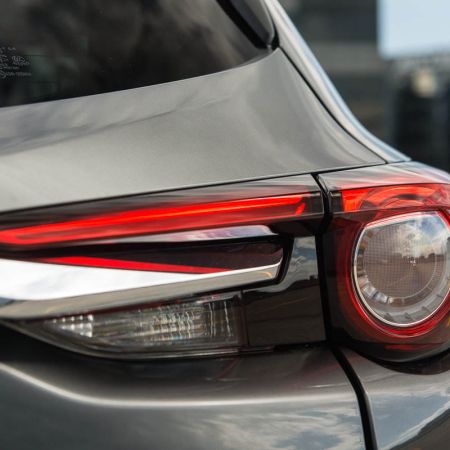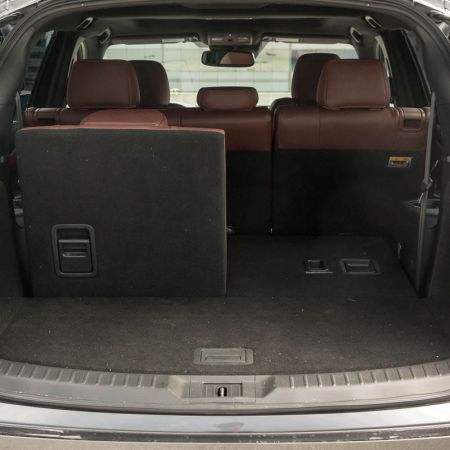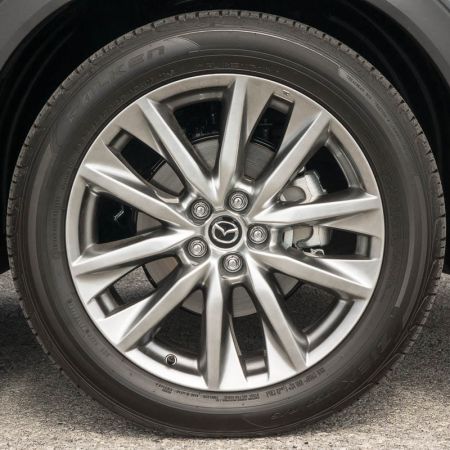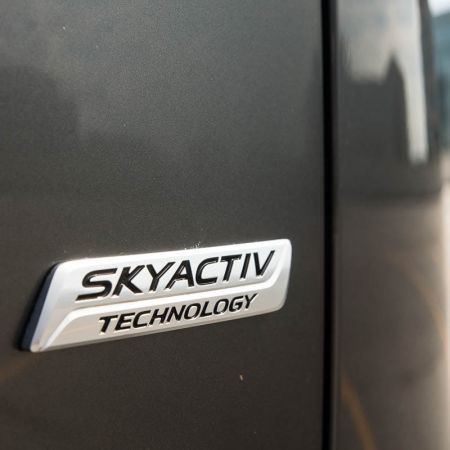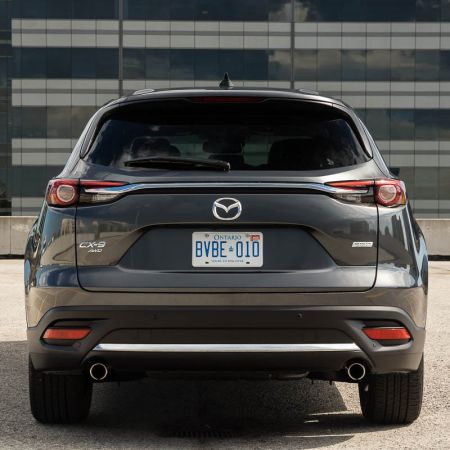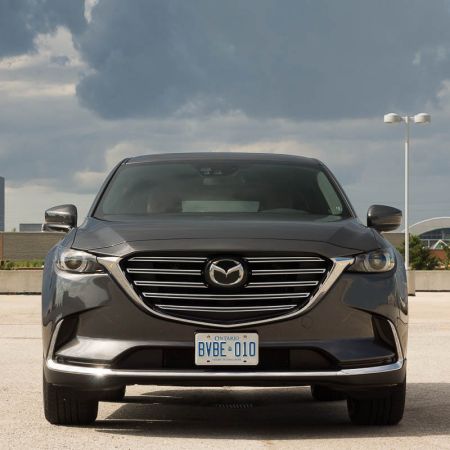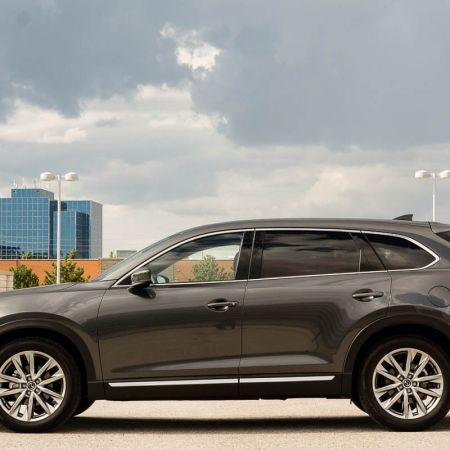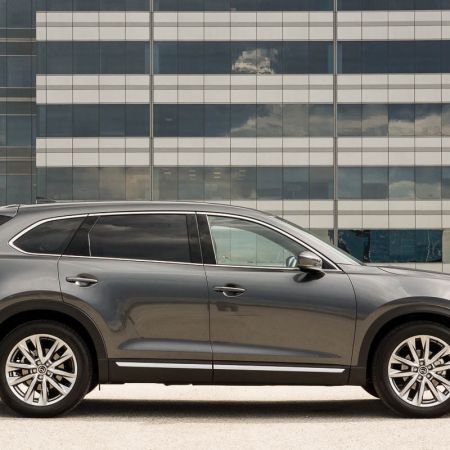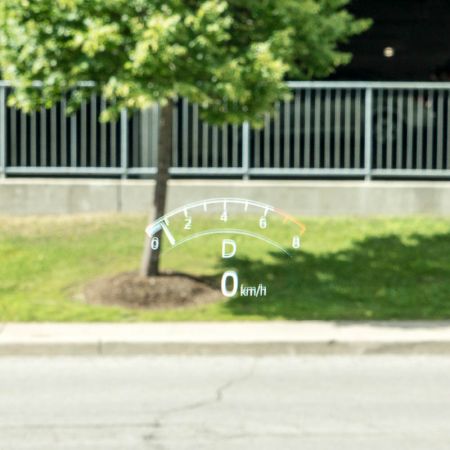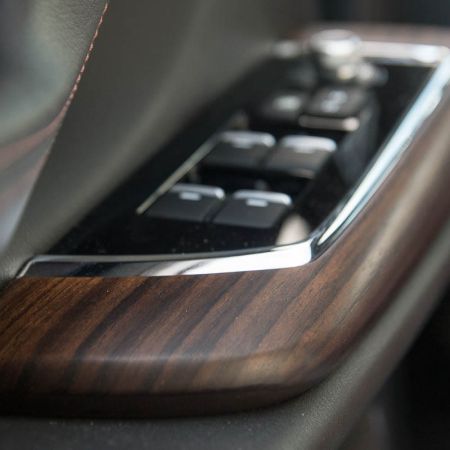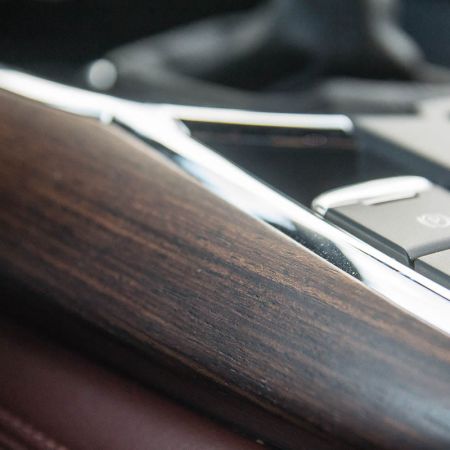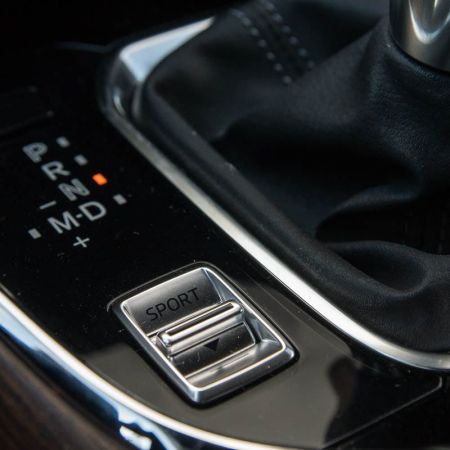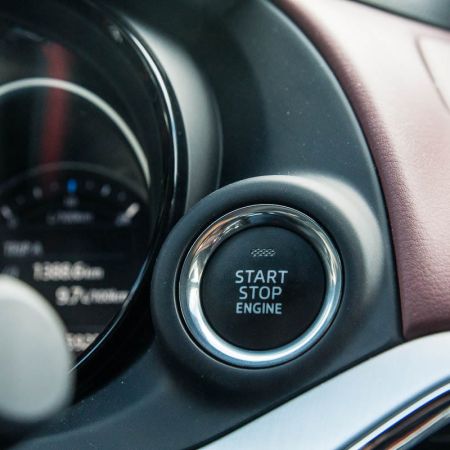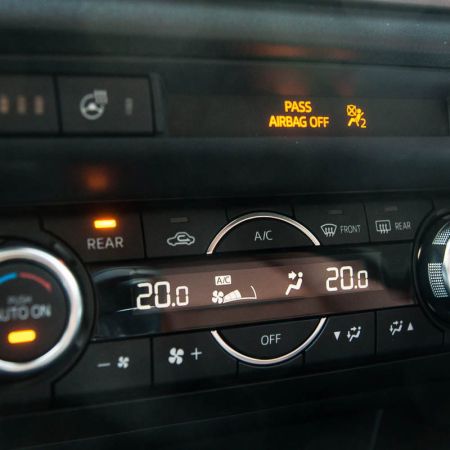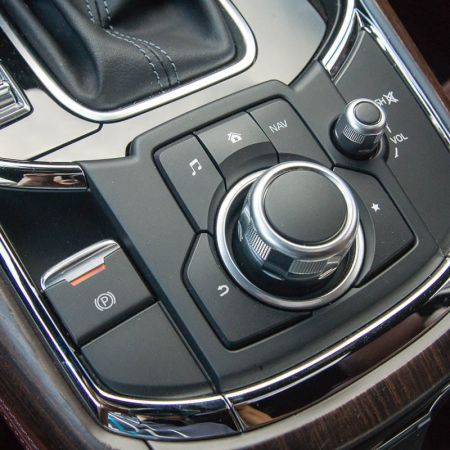The three-row crossover is here to stay. Minivans as we know it, have essentially been banished to the uncool kids corner. As good as they are at actually carrying people and stuff, the social norms have changed to the point that all new parents seem to need a massive AWD crossover as soon as their first-born arrives. It’s like the station wagon: as good as they are, people consider them too uncool to give them the respect they deserve. Rant over. It’s overdue to embrace the utility vehicle for what they are.
Mazda is well-known for their focus on driving enthusiasts. Every single product they make points toward the excellent MX-5 roadster (reviewed here) for inspiration, and aims to deliver a more engaging experience for the driver who cares more about the journey. There are people who simply want an appliance when it comes to the family vehicle, and there isn’t anything wrong with that. Mazda’s CX-9 has long tried to be the flag bearer for big-families, but tough competition from Toyota and Honda meant the original first-generation CX-9 didn’t see as much success as they would have liked it to have. Mazda is only now just wrapping up their full SkyActiv integration, and their CX-9 remained as one of the last products with Ford hardware built in.
Mazda’s SkyActiv top-to-bottom design philosophy has seen a lot of engineering-driven designs that don’t seem to get canceled out by the accountants. One example is the exotic 4-2-1 exhaust headers that live under the hood of all Mazda 3s and 6s. Typically only seen in race cars and exotic performance cars, headers like these ensure more efficient flow, and is a requirement to allow for the increased 13.0:1 compression. To this day, Mazda hasn’t released a V6 under the SkyActiv family, but would it be required? The all-new second-generation CX-9 aims to answer that question. We were sent a 2016 Mazda CX-9 Signature, painted in a handsome Machine Metallic Grey.
As much as Mazda is an engineering-focused company, design is also a big part of their portfolio. Their Kodo “Soul of Motion” design language allows Mazda to pursue a progressive, yet functional look. The CX-9 at first glance, impresses with its very large (and pointy) grille and sculpted headlights. The Signature model adds a faint LED strip to the outline of the front grille – it’s not visible during the day, but adds some contrast at night when the headlights are on. The side profile remains functional and appropriate for a large three-row crossover, but a restrained amount of satin chrome and a few subtle character lines add some visual flair. Rather than being just another jacked-up minivan, the CX-9 ends up being one of the better-looking choices in the segment.
Overall, the CX-9 is situated on the slightly-smaller end of the three-row crossover segment. Rivals like the Ford Explorer (reviewed here) offer more space inside, but offer a different experience for both the driver and passengers alike. Inside, the CX-9 does a good job bridging the gap between the mainstream and luxury-level options out there by focusing on premium materials, and top-notch build quality just about everywhere. The Signature trim improves on the tactile feels by adding (real) Rosewood trim around the centre console and the window controls. Unlike the over-processed wood-looking fake plastic typically seen, this stuff looks quite good – almost rivaling the stuff seen in recent Volvos. On the other hand, there is a liberal use of glossy piano-black plastics, which not only attracts fingerprints, but is also a magnet for dust.
In terms of capacity inside, the CX-9 comes up a little short in space, with a medium-sized second-row that doesn’t feature separate captain’s chairs. The third-row is similarly tighter, but surprisingly, a colleague standing at 6’4″ was able to squeeze into the very back for a short dinner run. The CX-9, while designed for families, does a good job with the number of cupholders, is also lacking somewhat on storage space. The centre console that houses many of the driver’s controls also gives up a bit of space to the rotary knob that’s used to operate the 8-inch MazdaConnect infotainment system. In front of the driver, an improved heads-up display projects a larger output onto the windshield, rather than a small piece of plexiglass as seen on previous Mazdas.
There’s a lot of technology inside and out that is designed to help the driver: adaptive radar cruise control, smart brake support, smart city brake support (both variations on the forward collision warning tech), blind spot monitoring, rear cross-traffic alert, lane keeping assist, and adaptive front lighting. All of these systems come with their own unique acronyms, but they all come together to provide a cohesive active and passive safety system that is only now starting to make its way into the mainstream market. All of these items are standard on the Signature trim, or available as part of the Technology package on the GT trim.
Many of the options in the this segment give the customer choice when it comes to powertrains. Many of them offer only a midsized V6, and some offer a turbo-four as their entry-level choice. Mazda bucks the trend here somewhat by only offering one single turbo-four as the only powertrain. This is also a rather large departure from the first-generation CX-9, which was offered only with a large Ford-sourced V6. Under the hood is a version of the 2.5L four-cylinder gasoline engine seen in the Mazda3 (reviewed here) and 6, but adds some trick technologies to improve power, driveability, and efficiency. Intercooling isn’t new to the drawing board, but it’s the way Mazda feeds the turbo on the SKYACTIV-G 2.5T that is the big deal.
At first, I thought this was an application of variable geometry turbocharging, which is only starting to make inroads into a few new gasoline powerplants, but not quite. One of the battles facing engineers when it comes to turbocharging is how to mitigate turbo lag. A larger turbo can theoretically deliver more boost, but will take more time to come up to full speed, delaying power delivery. A small turbo has less inertia to overcome, building boost sooner, but is limited to how much air it can move.
Mazda’s solution is the Dynamic Pressure Turbo, which uses a special valve body between the exhaust valve and the turbocharger that controls the flow of gases hitting the turbocharger. Constraining this flow of gases at low revs allows for a higher pressure build-up, and reduced turbo lag. As the revs build, the valve opens, allowing for full flow of air to and from the turbo, for maximum pressure. Mazda likens it to you putting your thumb over the end of a water hose, increasing water pressure. Similar to the Mazda 3, the header are of a 4-3-1 design, which improves exhaust flow to the turbo, like that of a twin-scroll unit.
All of these new ideas come together to create some impressive results: 250 horsepower at 5000RPM, and a whopping 310lb-ft of torque at 2000RPM. One thing worth noting: the CX-9 can happily accept regular 87-octane fuel. If you do, the power output drops to just 227hp, though the torque figure remains unchanged. This puts it somewhat behind some of its V6-powered rivals, but the generous torque rating is felt more in the real-world, rather than on a spec sheet. Mazda knows most of its customers spend most of their time under 4000rpm, and has tuned the powertrain to deliver the most oomph under real-world conditions. It’s not gutless by any means, but you do feel the torque peak fall off as you pass 4500RPM.
This power is routed through Mazda’s SKYACTIV-Drive six-speed automatic transmission. In typical Mazda fashion, it delivers crisp gear shifts, pursues an aggressive torque converter lock strategy, and generally is in the right gear. It is well-calibrated to take full advantage of the swell of torque generated by the turbo – downshifts aren’t really necessary. Power is routed to all four wheels through Mazda’s latest i-ACTIV AWD system. It’s still a reactive system, but uses sensors and logic to better predict where to deliver power under various driving conditions.
What you may quickly notice about the CX-9 once you get behind the wheel, is how it shrinks around you as you drive. This is Mazda’s largest product by a significant margin, but it doesn’t feel much larger than the smaller CX-5, for instance. It’s no MX-5, but the CX-9 does a good job at not feeling like a sloppy and ponderous minivan, like some of its rivals manage to be good at. Visibility is good through the large windows all around, and steering feel through the electrically-assisted system is quite decent considering the CX-9’s purpose. The 20” wheels look great and fill out the wheel-wells nicely, but the base 18-inch wheel and tire package will probably return a slightly more compliant ride.
Mazda rates the CX-9 Signature at 11.2L/100km in the city, and 8.8L/100km on the highway. Right off the bat, these two figures are about 20 percent better than the previous V6-powered CX-9. We used our CX-9 as a support vehicle for some motorsports events out of the city, and had it loaded up with coolers, chairs, and the biggest canopy in existence. The long highway stint saw air conditioning use the entire time, and generous use of the radar cruise control; we ended up averaging 9.5L/100km on the highway, and about 11.5L/100km during the commutes we did into downtown Toronto. The fuel tank will hold up to 74L of fuel. I think I’d stick to premium fuel for the best performance, and overall fuel consumption may even improve – your mileage may vary, of course.
The Mazda CX-9 caters to wildly different audiences, all depending on the trim level you opt for. The base GS starts at $35,300, and features the same 2.5L turbo-four engine. Front-wheel drive is the base choice, all-wheel drive is optional. You also get 18-inch wheels, but still get heated seats, LED headlights, and that triple-zone climate control. The $41,500 GS-L adds standard all-wheel drive, leather seating surfaces, moonroof, heated steering wheel, and more. The $45,500 GT adds 20-inch wheels, more chrome, Bose audio, and the adaptive front-lighting system. The top-end Signature rings in at $50,100, and adds that sumptuous Chroma Brown Nappa leather, Rosewood trim, and the signature LED accent lighting in the grille. Our particular test car came with the $300 Machine Grey Metallic paint option, bringing the as-tested price to $50,400.
Any mainstream family crossover that crosses the $50,000 mark needs to be special. After-all, this psychological barrier is what unofficially splits the mainstream market from the near-luxury or luxury market. The mid-range GS-L is the sweet spot, as it adds essentials like the heated steering wheel, sunroof, and leather. It’s probably the one I would have, if I had to pick. It appears Mazda is trying to aim for the more premium-end of the market; the GT and Signature trims definitely lean that way, but they wander ever closer to new rivals like the Infiniti QX60 (reviewed here) and even the Acura MDX. Both have base prices within a few thousand dollars, but require most option boxes checked in order to be competitive with the CX-9’s feature set. How much does the brand name matter to you?
Mazda has certainly carved out a niche for itself, across the board. We like their inexpensive cars for their focus on the driving experience, and their sports cars easily define the standard for what driving fun and pure pleasure should be. The 2016 Mazda CX-9 Signature checks off most of the important boxes and delivers most of what people would be looking for nowadays, but chases a slightly different customer. The engineers behind the SKYACTIV philosophy really did think outside the box, and were allowed to take a more radical approach to the family solution. When it comes time to be a grown-up soccer dad, one doesn’t necessarily need to give up the good driving experience, and that’s where the Mazda CX-9 comes in.

